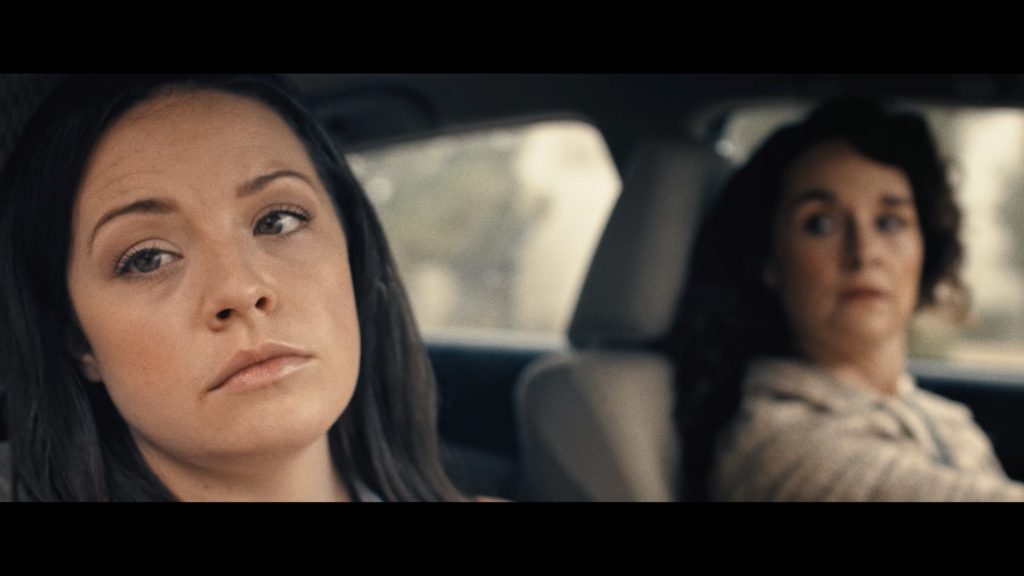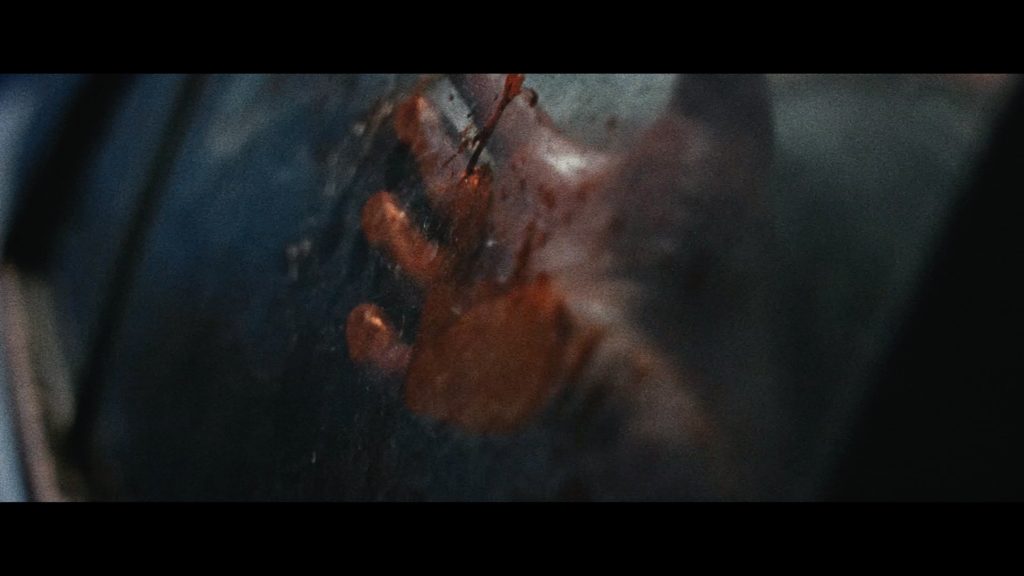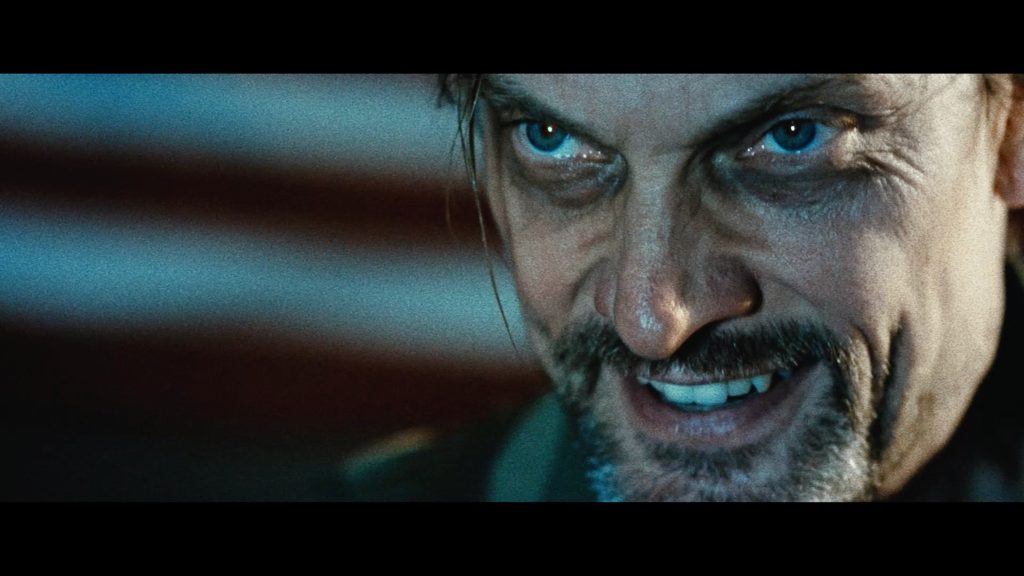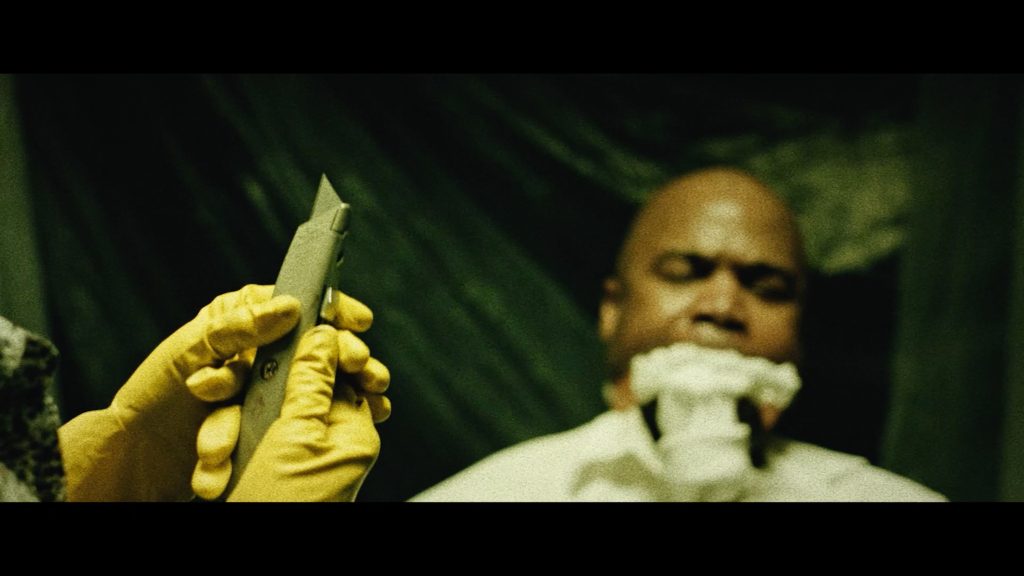The psychological thriller genre has seen a resurgence in recent years, with complex protagonists that blur the line between sanity and madness. Joining films like Black Swan and Split is the new release Waking Nightmare, which puts its own spin on the unstable lead character. We at Horror Facts recently had the opportunity to speak with co-director Steve Craig about bringing this thriller’s vulnerable yet unpredictable protagonist to life.
Waking Nightmare follows Jordan, a young woman plagued by manic episodes and sleepwalking after the loss of her close friend. Concerned about Jordan’s behavior, her mother has the family doctor prescribe Ambien to help control the sleepwalking. However, as time goes on, Jordan struggles with gaps in her memory and an inability to recall events from her blackouts.
In our conversation, Craig provided insight into Jordan’s fragmented mental state and how he worked to portray her inner turmoil on screen. He also spoke about the creative freedom the filmmakers had to delve into Jordan’s complex psychology through her limited self-awareness.
The below interview sheds light on the thoughtful vision behind the film’s morally ambiguous lead character and provides an inside look into the making of this layered thriller.
Horror Facts: Thank you for taking the time to speak with Horror Facts about your new film Waking Nightmare.
Steve Craig: Yes, sir. Thanks for having me.
HF: What initially drew you to this project and script?
SC: Brian Farmer is someone who I have worked with a couple of times before, including assistant directing on one of his movies. So, when he came up to me with the idea of Waking Nightmare and said, ” Let’s work together on this one, ” I thought it was a great way for us to utilize our strengths. It blended genres, allowing me to approach scenes differently as a filmmaker. For my first feature, it also gave me the chance to experiment in new ways. So, I think that’s what drew me to it.

HF: As you mentioned, Waking Nightmare blends several genres together, like horror, thriller, and drama. As the director, how did you manage the tonal shifts between the different genres in this film?
SC: I like to say that we took it scene by scene. One of the films that we watched in preparation and that we were inspired by was Takashi Miike’s, Audition. I don’t know if you’ve seen it, but it’s a Japanese horror film from the early 2000’s that sort of blends almost like a romantic drama with just a harrowing torturous horror film; like a very visceral horror film. When we watched that one, one of the things that we noticed was that each scene sort of had its own feel. In one scene, we felt like we were in a romantic drama, and then in another, we felt we were in a visceral torture film. So, watching that we came up with the idea that we could take each scene and treat it as its own thing. Then in post-production was where the blending took place, but when we were directing the scenes, we shot it in a way where it was detached from the entire picture.
HF: So, each scene was its own separate entity?
SC: That’s how we approached it. We wanted to film each scene according to its own style. If it was friends hanging out, we shot it like a friendly comedy. For dramatic scenes, we went for drama. We approached each scene individually in terms of style during production.

HF: I noticed that Waking Nightmare has surreal, dream-like themes. Could you describe your creative process for developing the unique visual style of the film?
SC: Yeah, good question. I think filming each scene as its own individual entity helped to engage the audience and keep them on their toes in not knowing what was going to come next. As the audience, you didn’t know if you were about to watch a more light-hearted scene or if you were about to witness something explosive and visceral. Then, in post-production, we introduced and stitched together the more psychedelic dreamy elements of the film. I did this by collaborating with other editors and visual artists like Matt Goldberg, who did that zany introduction to the film and a lot of animation and video art throughout.
HF: One of the things I found unique was, with most horror films of this particular genre, you have a killer who acts with intent. But Waking Nightmare had more of this concept of a reluctant killer. What appealed to you about exploring a killer who lacks awareness of their own actions? How does it create a different kind of horror?
SC: I love that you said that. I think that was what I loved about the script and was something else that drew me to the film, and also something that I grew in appreciation for as I was working on it. The formula of the film struck me as a sort of slasher film. Not to give away too much about the film, but people in the film lose their lives in sudden, traumatic, and violent ways, and yet our main killer is totally unaware of what is going on. This nuanced approach makes the everyday small-town girl just as dangerous and brutal as a typical slasher movie villain. Her unawareness and enabling family make her unpredictable. I found it compelling to have such a relatable character go against horror archetypes while posing the same threat.

HF: You mentioned that the killer in this film goes against type and is unaware of their actions, so they have no clearly defined motivations. What creative opportunities did having this type of antagonist provide in shaping the style and tone of the film?
SC: One of the things in post-production that I wanted to start hinting at was the psychological elements that she’s going through. Her experiences and the things that she’s doing unbeknownst to her are compounding into a sort of a waking nightmare, where she starts to question if she is a bad person. At the end of the day, she just wants to be normal, but she’s plagued with all this guilt, and she’s not 100% sure why she feels this way. This mentally locked-in-the-dark concept allowed for a lot of creative freedom for myself, Brian, and the actors to delve into her nightmares, her family drama, her friends, and her trying to be normal, and also gave us the opportunity to try a lot of different things out in the editing room. It was a really fun way to just experiment with finding that balance for the character and the film overall.
HF: In most horror films, the audience identifies with the victims. But here, the audience also gets the killer’s perspective. How did you craft moments that elicit empathy or understanding for the killer despite their horrific acts?
SC: What I noticed early on was that the main character is battling demons that come from her toxic upbringing and hometown environment. The people she ends up killing are extremely toxic individuals who could have been villains in a different horror movie. In that way, she is trying to kill the metaphorical demons from her past. You hopefully empathize with her as someone facing many obstacles – from family negligence and overbearing parents to toxic locals in a town she almost escaped. Even though her actions are extreme, she comes across as a girl just trying to find stability in life while battling these demons from her family and hometown. But it is also open to interpretation.

HF: Many of the characters in Waking Nightmare seem to take extreme measures in the name of protecting what’s “theirs.” What motivated this theme of distorted love and possession?
SC: I like to think that Waking Nightmare is a movie of villains, everyone that she comes up against and in some way, even the protagonist herself is a villain. Then you have the mother, who is this overbearing figure in her daughter’s life, not totally unlike Carrie White’s mother, who is doing what she thinks is best for her daughter. She is this helicopter-style parent that doesn’t allow her daughter to grow outside of this dark claustrophobic world that she’s created for her. You look at her reaction to when the friend came over or her reaction to anyone coming to interact with her daughter. Granted, in her own mind, she sees herself as being a protective, loving mother and thinks she is doing what is best for her daughter, but she is not able to see the dangerous effect she is having on her daughter’s life. I think this is a relatable theme that many people have faced from having overbearing and overprotective parents.
HF: As the director what direction did you provide to the main characters?
SC: Brian was more in charge of directing the actors. I was more of the technical guy. I was the guy who was tasked with making a scene look and perform a certain way. So, unfortunately, I can’t say a lot about how he directed the actors. But the one thing I can say is that all the actors were very seasoned. Shelly is very technical. She has this ability to turn it on and off on command. Then Diane – I was a big fan of hers, so it was really thrilling to work with her and I noticed from her performance that she is someone that ramps it up as she goes along. She operates on ambition and she has this desire to make everything she does great and wants to get everything just right. I loved that about her. So, really, all Brian had to do was give some adjustments here and there, maybe some suggestions to try it different ways, but for the most part, I think the actors were very much on board with their characters and were excited to do it and they gave us what we were looking for.

HF: What do you hope viewers are going to take away from this film? Any feelings or emotions that you hope to invoke in the audience?
SC: I hope that they think it’s a wild ride. I don’t know how many people are going to watch it more than once. But I think it’s the kind of movie that you can take more away from the more you watch and think about it. I know I have. I hope that people think that it was a wild ride whether they totally understand it or not and maybe decide it’s worth another watch. It’s not that long of a movie, so you can throw it on and show your friends and I hope they can have fun with it.
HF: What projects are you working on following Waking Nightmare?
SC: I’ve got a short film I’m working on called Milton the Strangest Man Alive. The film is an allegory for being oversaturated by Instagram and swiping culture, all while the world is falling apart around him in an Eraserhead kind of way. I’ve also got a screenplay about a small-town murder that I’m working on. But mostly I have been focusing on my commercial business, which has been great. I am very happy and have been very busy maintaining my video producer career and creating commercials for my clients. I also recently won an award for my work. You can go on over to StephenJosephCraig.com and check out my work.

Throughout our extensive conversation, Craig provided a window into the creative challenges behind bringing such an unpredictable character like Jordan to the screen. Through thoughtful directing choices and collaboration with a talented cast and crew, he found a way to walk the fine line of depicting the fragmentation of Jordan’s psyche while still crafting an engrossing thriller. The film’s surreal dream sequences and jolting tonal shifts promise to immerse audiences in the chaos of Jordan’s world in a way we rarely experience in film.
Though Craig is proud of the final product, it did not come easily. He spoke passionately about the care the team took in translating Jordan’s complexities to the screen. Their commitment and creative vision ultimately brought to life a protagonist that defies expectations. For audiences up for a genre-bending descent into the mind of an unstable yet fascinating character, Waking Nightmare offers a viewing experience unlike any other.
Craig may continue to push boundaries in thrillers to come, but for now, his sights are set on expanding his successful commercial production company. As mentioned in our interview, Craig has found great success creating commercials for clients and was recently honored for his outstanding work with a prestigious industry award.
Waking Nightmare is currently available on Tubi


I am having trouble watching this on tubi it just spins is there anywhere else I can watch this?
Hello Kim,
Thank you for your question.
Your only other options are to rent Waking Nightmare on Amazon for $1.99 or buy a digital copy for $7.99.
I suggest you keep trying Tubi, as that’s the free option.
Also, in the future, if you ever want to find where a movie is available, you can check Justwatch.com. It’s a handy site that tells you all the platforms where you can watch a particular title.
Hopefully, it helps you find where to watch movies easily!